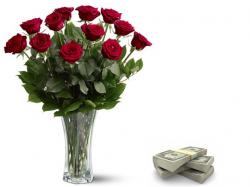Valentine’s Day War Of The Roses
February 1, 2010 | 1 min to read

Valentine’s Day is the biggest holiday for fresh flower sales, accounting for
40% of annual revenue, according to the Society of American Florists, a trade
group. Prices can easily top $60 for a bouquet of a dozen long-stemmed roses,
with fancier arrangements well above $100.
But wait much beyond the start of February to order, and you can expect to pay a
premium. Many florists and other companies that sell flowers use complex
algorithms based on their supply and demand gauged from early orders to set
pricing, says Jon Strom, the vice president of floral and lifestyle
merchandising of the Price Chopper Supermarket chain based in Schenectady, N.Y.,
who has also worked on the wholesale and online sides of the floral industry. As
the holiday approaches, they may offer sales on arrangements that haven’t sold
well, and pump up prices on those popular bouquets with dwindling supply.
A cold snap in Colombia, which supplies many out-of-season roses sold
commercially, may also affect pricing this year. It didn’t damage anything, but
it slowed production down, says John Dole, a professor of horticultural science
at North Carolina State University in Raleigh, N.C. The Colombian Association of
Flower Producers estimates it may have lost as much as 30% of the crops in
affected areas near Bogota. If florists must compete for last-minute supply,
consumers who procrastinate on ordering could face heftier-than-normal premiums.
To read the rest of this story please go to:
The Wall Street Journal
